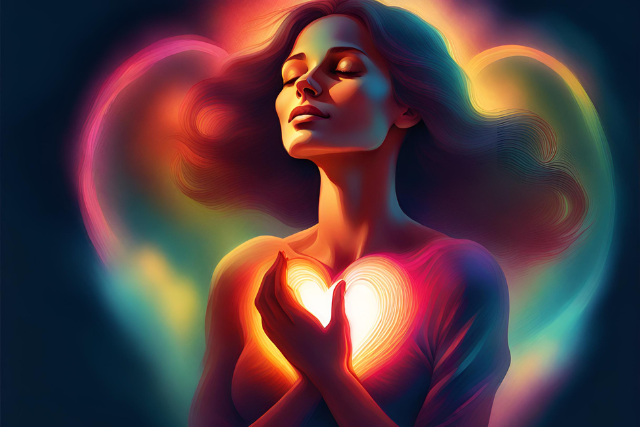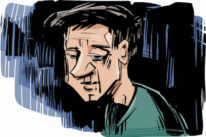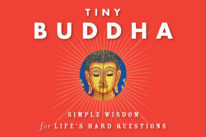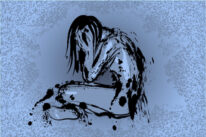
If it weren’t for my darkest moments, I wouldn’t appreciate the life I have today. I’ve overcome a lot, and my biggest battle wasn’t the hurdles themselves but how they made me feel, draining my energy and desire for life until I nearly lost it completely. I’m sharing my story to give you hope. If I can transform pain into beauty through emotional alchemy, you can, too.
I’m not going to lie and say my journey has been easy. Nor is it over; overcoming a lifetime of dysfunctional patterns from a toxic childhood and challenging adult experiences takes time. However, it is so very worth it. Here’s how I perform emotional alchemy, and you can, too.
My “Shawshank” Moment
Although I didn’t always recognize how childhood trauma led to my adult victimization, I now see how it created the conditions. My inner child wasn’t only wounded; I, in many ways, was still a child.
I grew up in a household where anger was the primary emotion, and that seed remained within me. When an adult tragedy struck, I watered it, first directing it at a world I felt was impossibly cruel and finally against myself.
The seed sprouted when I became chronically ill with disabling symptoms that gradually robbed me of my ability to work a traditional job. I lost everything, including my home.
Because I had never learned how to relate to others, I didn’t know where to turn for help and was convinced that I would be ridiculed for asking. Having never learned how to set appropriate boundaries as a child, I pushed away the few people who tried to lend a hand, suspecting ulterior motives.
Accepting assistance was burdening another, something strong, capable, worthy people didn’t do, and the people who offered aid had something up their sleeves.
Homeless and feeling utterly powerless, I had no idea how to go on.
Getting Busy Living
Anger was useful in my recovery. It took well over a decade to find a diagnosis—an underlying heart defect.
I now know that my emotional outbursts at the doctor’s corresponded to one of my biggest complex post-traumatic stress disorder (c-PTSD) triggers. As a child, I was constantly invalidated and dismissed, including when I had health issues.
Any time I got sick, I was told it was a “cry for attention” and an attempt to “manipulate” my parents into caring for me. Experiencing similar suspicion again led to irritation and many tears that no doubt confirmed my provider’s impression of me as “hysterical.”
My anger drove me to prove I was not causing my symptoms, exacerbating them, or making them up. But how? I went utterly straight-edge, taking up a super-healthy, nearly monastic lifestyle of whole foods intended to nurture physical and mental health, regular physical activity, and all the brain-and-soul healing holistic therapies I could find online.
Little did I know I was laying the foundation of my recovery. Although people tend to think linearly, as though one thing leads to another like a straight line, existence is more like a circular mandala with interwoven threads creating the tapestry and holding that giant parachute together. When one thread wears thin, the others pick up the slack during repairs. My work on my physical body began to heal my mind. But how?
1. Diet and Mental State
My diet today still consists primarily of plant-based foods close to their natural forms. I also take care to increase my intake of certain nutrients necessary for brain health through the meals I choose, such as:
- B-vitamins for neurotransmitter production.
- Omega-3s to prevent brain disorders and improve mood.
- Magnesium, selenium, and zinc for improved mood and nervous system regulation.
I also eliminated anything that could adversely affect my mood. That meant cutting out:
- Foods with artificial colors, flavors, and preservatives.
- Added sugar.
- Processed, bleached flour.
- Unhealthy oils.
It’s tougher to eat this way on a budget. I stocked up on dried fruits, nuts, and seeds that last; inexpensive tuna; and fresh, organic produce from the farmer’s market.
2. Movement and the Full Nervous System
While most of your neurons are in your brain, you have them all over your body. Emotional trauma can get trapped in your somatic system, but nurturing practices like Yin and restorative yoga can release it.
I find it’s best to get my heart pumping to burn off some of those excess stress hormones like cortisol before I can dig into deeper release on the mat. Find movement that soothes you, which can include pumping you up to blow off steam.
My yoga mat has become a true home for me. It’s where I go to sit, or passively stretch, with my emotions when they overwhelm me. If you have c-PTSD, you know that your triggers don’t disappear — you train yourself to notice them and react to them less so that they don’t control you. Sometimes, that means creating a necessary pause before responding, and my yoga mat is my place to do that.
3. Mindfulness
Mindfulness is the true key to transforming pain into power through emotional alchemy. I’m convinced it’s the one tool that can help with the epidemic of narcissism American society faces—and I speak as someone who learned such traits from the dubious “best.” People with such personalities have defenses so sky-high that they react to even the most well-intended advice with distrust.
However, mindfulness creates space for deep truths to bubble up from inside. You aren’t being “lectured” by someone else who threatens your sense of self and the worldview that protects you. Simply focusing on your inhales and exhales provides a sense of separation and objectiveness that lets you realize two critical truths:
- You are not your thoughts.
- You are not your feelings.
You have thoughts and feelings, but you also have the you that’s sitting with them on the mat, deciding how to best manage them. Recognizing that you have power and choice over how you direct your energy teaches you that if you want anger or distrust to grow, you water those seeds through your actions and decisions.
The beautiful part? You also realize if you want to nurture love, hope, health, camaraderie, faith, optimism, joy, and happiness, then you water those seeds.
One small act of goodness can start a ripple effect. Think of it like the frayed strands of a worn tapestry weaving themselves back together, one string at a time. It starts with self-love.
I didn’t fully realize when I began my journey that I was essentially reparenting myself from scratch, but that’s what I was doing. My higher self was acting like a good mother, ensuring I had healthy foods, the right amount of exercise and sunlight, and plenty of nurturing.
Creating Emotional Alchemy
Mindfulness also helped me manage the overwhelming anxiety I felt without my usual coping mechanisms to handle stress. Anyone who has experienced morning-after hangxiety knows that withdrawal from alcohol ramps up this emotion, and my life stressors hadn’t magically disappeared. I was still battling housing insecurity, trying to earn enough money to keep a roof over my head while managing necessary medical appointments and the associated travel time.
However, I couldn’t have transformed my pain into power through emotional alchemy without identifying my feelings and learning how to manage them in healthy ways. For that, I dug into everything I could learn about human psychology. I engaged in therapy whenever possible. Although there was limited help available, I briefly found someone who listened to me rehash my childhood without judgment.
Mostly, though, I self-directed my treatment, making use of the resources I had available. I engaged in the following practices, often more than once per day, to slowly heal my central nervous system. These activities decreased my emotional reactivity and helped me make wiser choices based on mindful contemplation instead of a panicked need to do something, anything:
- Yoga: Not all styles require high energy or physical fitness, and many poses have modifications for differing skill and mobility levels. Try Hatha, Yin, or restorative if you’re new.
- Meditation: While there are many styles, I find that guided meditations are best for beginners. They acclimate you to sitting quietly with your thoughts while providing just enough direction to prevent falling into a rumination trap or taking a dark trip down anxiety lane.
- Nature walks: Oodles of studies show nature’s healing power on your body and mind. Hike, or better yet, go camping. It’s free or close to it.
- Grounding: Grounding or earthing puts your skin in contact with the earth’s natural magnetic field. While it sounds new age, it works.
- Nutrition: Although I give myself more dietary leeway today, my meals are still primarily plant-based. I continue to avoid unhealthy substances, including alcohol, knowing what it does to my neurotransmitters.
- Learning: Educational materials and online support groups are invaluable resources.
I’m not a celebrity and certainly not among the elite. However, my message of hope is that you don’t necessarily need an expensive retreat or inpatient care to transform pain into power through emotional alchemy.
Use what you have. YouTube is a fabulous resource of free nutrition and exercise videos, and the internet abounds with information. It’s a matter of feeding yourself the right input instead of getting sucked into social media. Seek websites and channels by credentialed individuals to ensure the information you receive is accurate and helpful.
Emotional Alchemy: Transforming Pain into a Beautiful Life
Today, my life continues to improve. Working on myself made it much easier to get the other pieces of my life under control.
It might take reparenting yourself if you have severe c-PTSD. You might have to actively decide to stop doing the things that hurt your mind, body, and emotions and start nurturing yourself like you would a child. However, over time, you can create emotional alchemy and transform your pain into power, sharing what you have learned in your journey to bring hope to others.
About Beth Rush
Beth is the mental health editor at Body+Mind. She has five-plus years of experience writing about behavioral health, specifically mindfulness-based cognitive therapy. Beth also writes about the power of human design to reveal our full potential and purpose. You can find her on Twitter @bodymindmag. Subscribe to Body+Mind for more posts by Beth Rush.













 Though I run this site, it is not mine. It's ours. It's not about me. It's about us. Your stories and your wisdom are just as meaningful as mine.
Though I run this site, it is not mine. It's ours. It's not about me. It's about us. Your stories and your wisdom are just as meaningful as mine. 